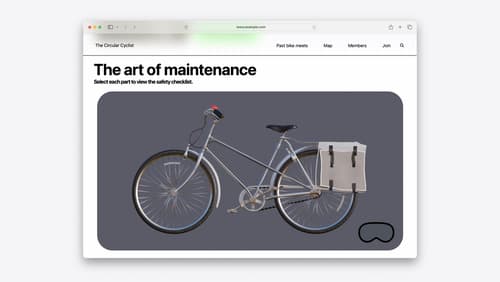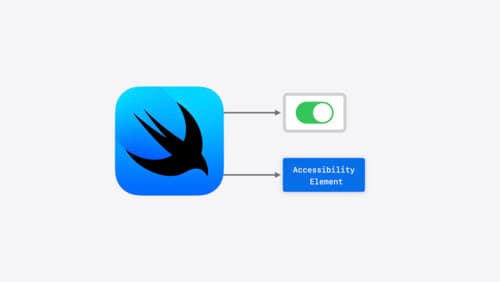how do I represent data for blind users?
Asked on 2024-07-31
1 search
To represent data for blind users, you can leverage several accessibility features and best practices discussed in various WWDC sessions:
-
VoiceOver Navigation:
- Ensure that all interactive elements are accessible via VoiceOver. This includes providing meaningful labels and descriptions for all UI elements.
- Use the
accessibilityElementandaccessibilityLabelproperties in SwiftUI to make sure that VoiceOver can describe the content and actions of your views. For example, combining multiple elements into a single accessible element can simplify navigation (Catch up on accessibility in SwiftUI).
-
Audio Descriptions:
- For highly visual content, provide audio descriptions that narrate what is happening on the screen. This is particularly useful for dynamic content where the description can adjust based on user interactions (Design interactive experiences for visionOS).
-
Dynamic Type:
- Support Dynamic Type to allow users to adjust text size according to their needs. This ensures that text is readable for users with low vision (Get started with Dynamic Type).
-
Accessible Charts:
- Use Swift Charts, which are accessible by default. VoiceOver can describe the chart, including axes and data series, making data visualizations accessible (Swift Charts: Vectorized and function plots).
-
Alternative Input Methods:
- Design your app to work with alternative input methods such as voice control and keyboard navigation. This includes ensuring that hoverable views and dynamic content are accessible (Catch up on accessibility in SwiftUI).
By incorporating these practices, you can create a more inclusive experience for blind users. For more detailed guidance, you can refer to the specific sessions mentioned above.

Swift Charts: Vectorized and function plots
The plot thickens! Learn how to render beautiful charts representing math functions and extensive datasets using function and vectorized plots in your app. Whether you’re looking to display functions common in aerodynamics, magnetism, and higher order field theory, or create large interactive heat maps, Swift Charts has you covered.

Optimize for the spatial web
Discover how to make the most of visionOS capabilities on the web. Explore recent updates like improvements to selection highlighting, and the ability to present spatial photos and panorama images in fullscreen. Learn to take advantage of existing web standards for dictation and text-to-speech with WebSpeech, spatial soundscapes with WebAudio, and immersive experiences with WebXR.

Catch up on accessibility in SwiftUI
SwiftUI makes it easy to build amazing experiences that are accessible to everyone. We’ll discover how assistive technologies understand and navigate your app through the rich accessibility elements provided by SwiftUI. We’ll also discuss how you can further customize these experiences by providing more information about your app’s content and interactions by using accessibility modifiers.
